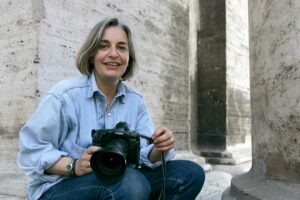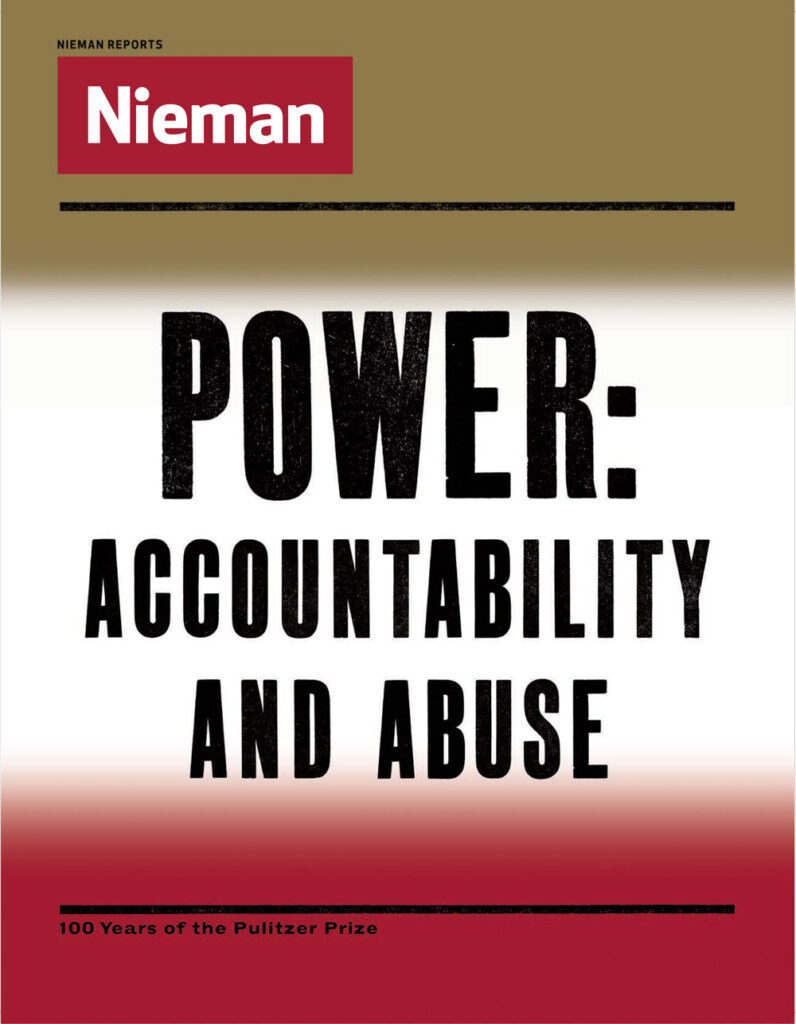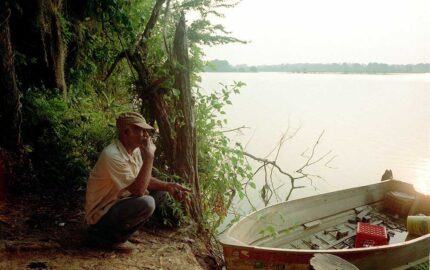Santiago Lyon, NF ’04, vice president/photography of The Associated Press, recalls his longtime friend and colleague Niedringhaus, who was shot and killed in Afghanistan in 2014.
She made it her life’s work to document war and conflict around the world; those situations where military power prevails and differences are settled with brute force rather than with the ballot, or through debate and consensus.

She sought accountability and found abuse, time and time again. Over the years she honed her skills as a professional witness and became a very good one—at great personal risk.
She was with the U.S. Marines as they fought their way into Fallujah, Iraq, street by bloody street, for the U.S. military’s final assault on the city in November 2004. It was there that she made this image of a Marine leading away a captured Iraqi man. The detainee is barefoot, his hands tied behind his back. The Marine, a determined expression on his face, has him firmly by the shirt collar, pushing his neck downward as they both walk toward the camera. Whatever that prisoner did, or didn’t do, that Marine was holding him accountable. And for that moment in time at least, Anja was holding the Marine accountable for ensuring the prisoner wasn’t mistreated or abused. The image was one of 20, shot by a team of AP photographers, that won a Pulitzer Prize.
Further Reading
Common Ground by Anja Niedringhaus
Quiet Human Moments Amidst Great Strife by Kathleen Carroll
Good photography looks natural, almost easy, to the uninitiated, but pick up a camera—even in peacetime—and it quickly becomes apparent how difficult it is, requiring a balance of light, shutter speed, aperture and sensor sensitivity on the technical side, coupled with positioning, anticipation, and creativity. It’s a highly complex dance and requires a special sort of journalist. Anja’s considerable achievements as a photojournalist were due in large part to her tenacity and focus, coupled with her ability to put her subjects at ease. This image reflects her determination in a difficult circumstance and here, as in so many other places, she managed to obtain the elusive but highly sought after condition of near invisibility, becoming the proverbial fly on the wall, showing us how people live and die the world over, too often in violent ways, as power is abused.




